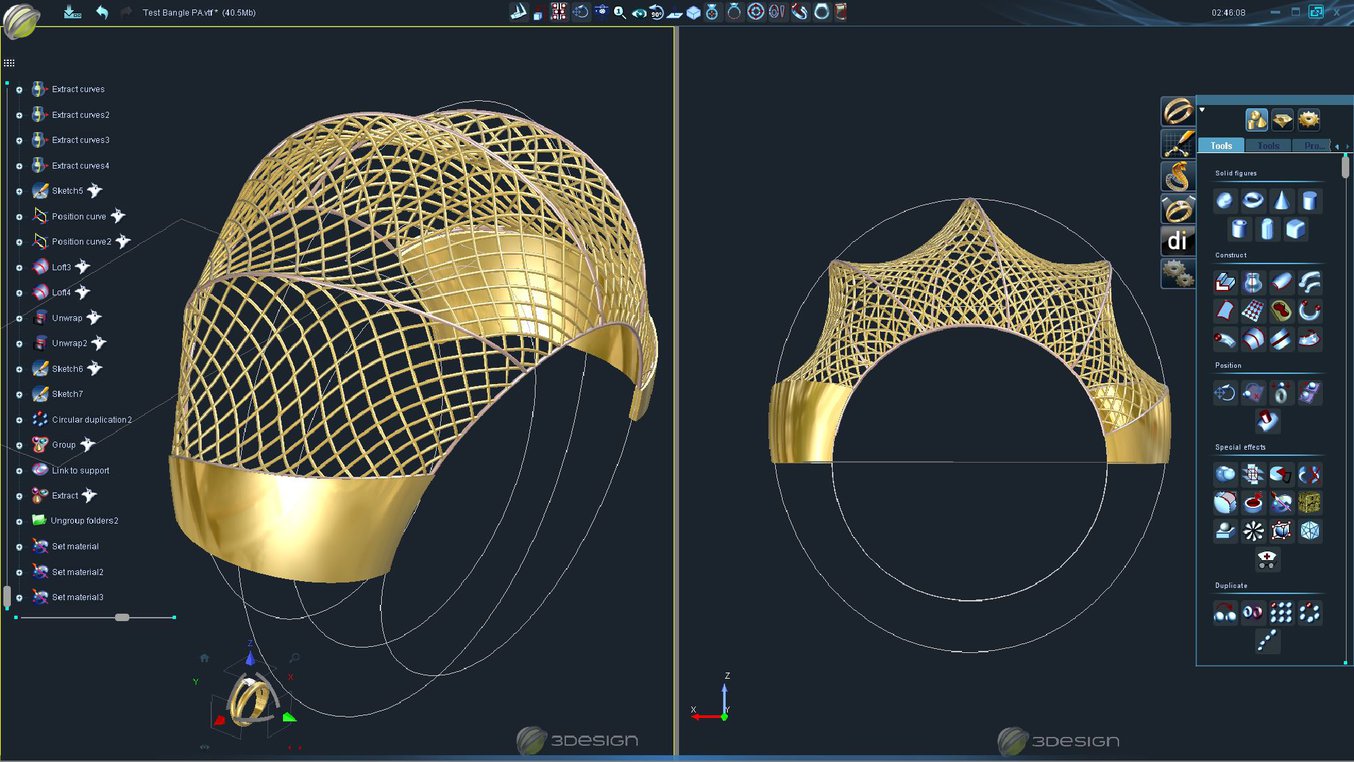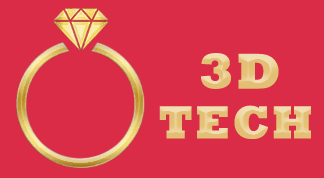
Detailed examples of specific CAD software (e.g., Rhino, MatrixGold) and CAM machinery used in the industry
CAD Software for Jewelry Design
1. Rhinoceros (Rhino)
- Overview: Rhino is a versatile 3D modeling software that is widely used in various design fields, including jewelry. Its powerful NURBS modeling capabilities allow for the creation of complex and detailed designs.
- Features:
- Intuitive interface for easy navigation.
- Extensive library of plugins, such as Grasshopper for parametric design.
- High-quality rendering options to visualize designs before production.
- Use Case: Designers use Rhino to create intricate ring settings, pendants, and other detailed pieces, allowing for precise control over curves and surfaces.
2. MatrixGold
- Overview: MatrixGold is specifically designed for jewelry professionals and combines CAD with a focus on gemstone settings and manufacturing.
- Features:
- Built-in templates for common jewelry types, making it easier to start new projects.
- Advanced tools for creating and modifying designs, including gem setting options.
- Integration with CAM systems for a seamless transition from design to production.
- Use Case: Jewelers often use MatrixGold for custom engagement rings, leveraging its tools to easily modify designs based on client preferences.
3. SolidWorks
- Overview: SolidWorks is a parametric CAD software that is popular in engineering but increasingly used in jewelry design for its precision and robust modeling capabilities.
- Features:
- Parametric design allows for easy modifications of existing models.
- Advanced simulation tools for analyzing the strength and durability of designs.
- Excellent rendering capabilities to produce photorealistic images.
- Use Case: Designers utilize SolidWorks for creating intricate mechanisms in jewelry, such as clasps or adjustable rings, ensuring they meet functionality and aesthetics.
4. Tinkercad
- Overview: Tinkercad is a user-friendly, web-based CAD tool that is great for beginners in jewelry design.
- Features:
- Simple drag-and-drop interface that makes 3D modeling accessible.
- Useful for creating basic designs and concepts quickly.
- Integration with 3D printing services for prototyping.
- Use Case: Ideal for hobbyists or new designers experimenting with jewelry concepts before moving to more complex software.
CAM Machinery for Jewelry Manufacturing
1. Roland MDX Series
- Overview: Roland’s MDX series includes versatile milling machines that are commonly used for producing wax models from CAD designs.
- Features:
- High precision with various spindle speeds for different materials.
- User-friendly interface with easy setup and operation.
- Capability to create intricate designs suitable for lost-wax casting.
- Use Case: Jewelers use Roland MDX machines to create wax models of their CAD designs, which are then used in the casting process to produce final metal pieces.
2. EnvisionTEC 3D Printers
- Overview: EnvisionTEC specializes in 3D printing technology specifically tailored for jewelry applications, including both resin and metal printing.
- Features:
- High-resolution printing for detailed designs.
- Wide range of materials available, including castable resins.
- Fast printing times, allowing for quick prototyping and production.
- Use Case: Jewelry designers use EnvisionTEC printers to create highly detailed prototypes or final pieces, significantly speeding up the design-to-production timeline.
3. CNC Mills (e.g., SHERLINE, Tormach)
- Overview: CNC milling machines, such as those from SHERLINE and Tormach, are widely used in jewelry production for their versatility and precision.
- Features:
- Capable of machining various materials, including metals, plastics, and wood.
- Software integration allows for direct input from CAD models.
- High accuracy in replicating designs with consistent quality.
- Use Case: Jewelers often use CNC mills to produce complex metal parts or engrave designs directly onto the jewelry, providing both functional and decorative elements.
4. Laser Cutters (e.g., Epilog, Trotec)
- Overview: Laser cutters are essential for precise cutting and engraving in jewelry production.
- Features:
- High precision and clean cuts on various materials, including metals, acrylics, and wood.
- Engraving capabilities for adding intricate designs or text.
- Fast operation, suitable for both prototypes and production runs.
- Use Case: Jewelers utilize laser cutters for creating intricate patterns on surfaces or for cutting out shapes for pendants and earrings.
Conclusion
The integration of CAD and CAM technologies in the jewelry industry has transformed how designers create and manufacture their pieces. By leveraging advanced software like Rhino and MatrixGold, combined with efficient machinery such as CNC mills and 3D printers, jewelers can produce stunning, high-quality designs that meet the demands of today’s market. Embracing these tools not only enhances creativity but also improves efficiency and consistency in the production process.











